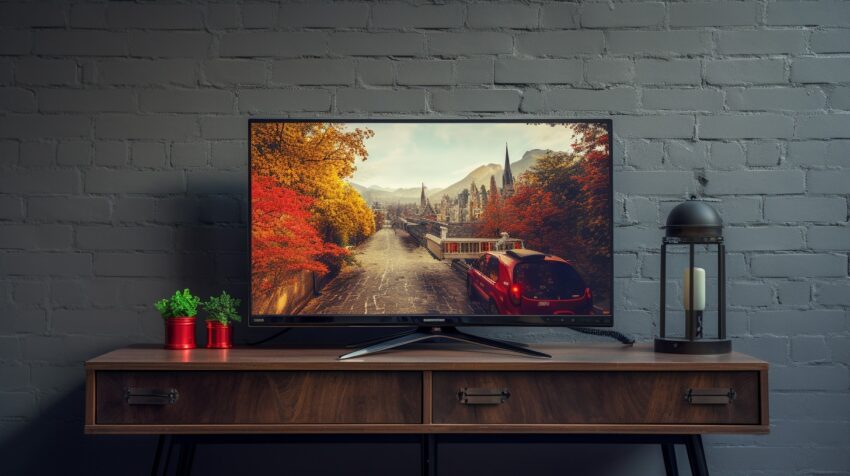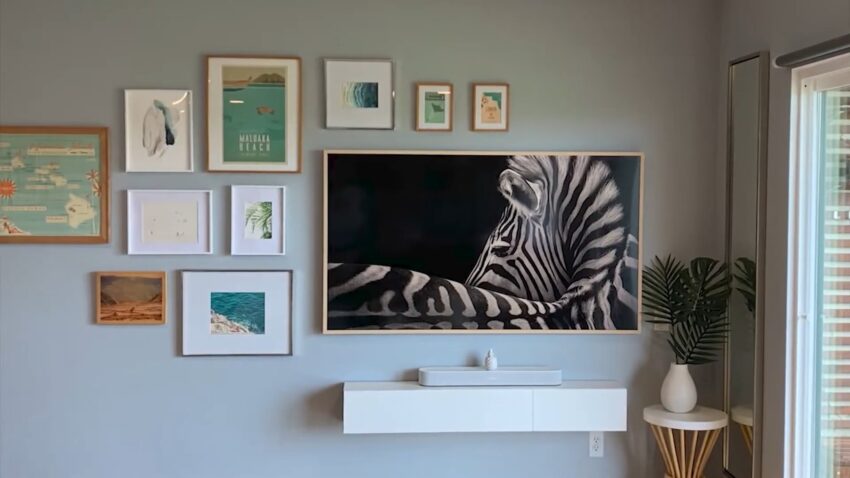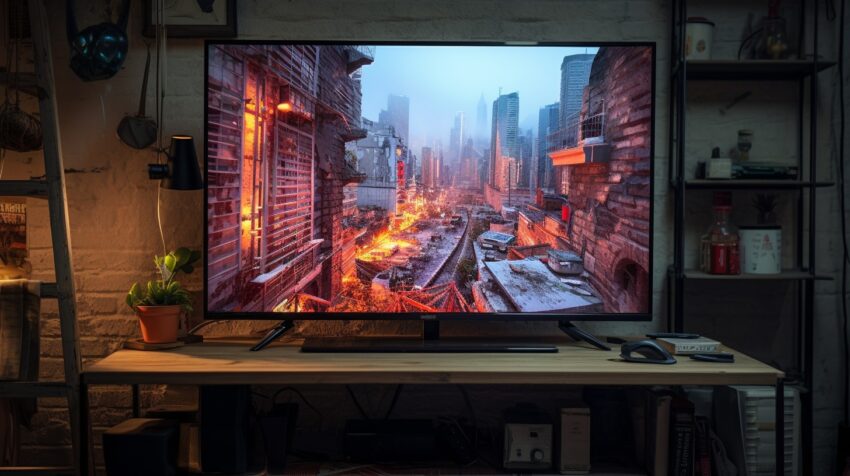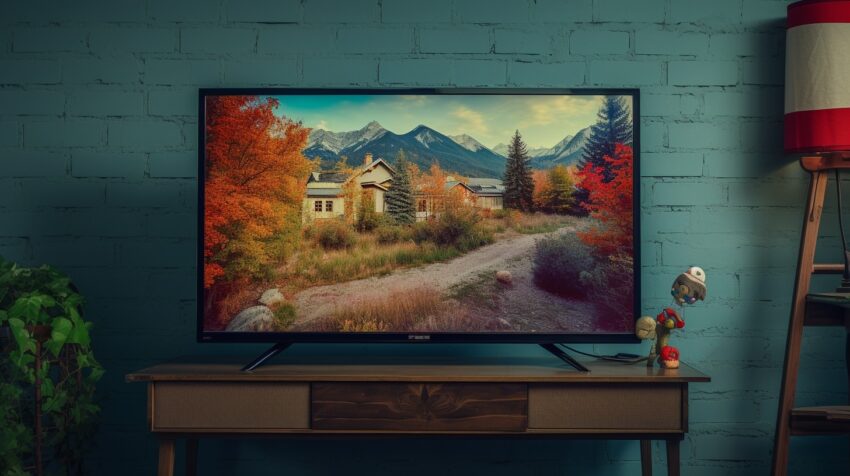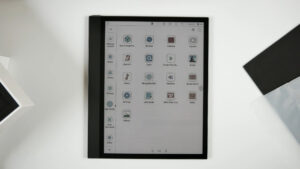Ever had one of those moments where you’re lost in thought, mulling over life’s intriguing questions, like “Just how big is a 20-inch TV?”
In this article, we’ll shed light on this very question, breaking down the dimensions in both inches and centimeters. We’ll also touch on how the shipping size might differ and explore the ideal scenarios where a 20-inch TV fits just right. Whether you’re team imperial or metric, or simply curious about the perfect spot for that compact screen, we’ve got the answers you’re looking for.
Size Terminology
When we talk about the size of a TV, it’s not as straightforward as it might seem. The size, whether it’s 20 inches or 75 inches, is always measured diagonally from one corner of the screen to the opposite one. So, a 20-inch TV doesn’t mean it’s 20 inches wide or tall; it’s the diagonal measurement we’re referring to.
But why the diagonal? Well, it’s a method that offers a consistent measure across all TVs, regardless of their shape or aspect ratio. It’s a universal standard that ensures you’re comparing apples to apples when looking at different models.
The Size in Inches
Alright, let’s get to the specifics. A 20-inch TV, as you’ve probably guessed, measures 20 inches from one diagonal corner to the other. But what about its width and height? Most TVs today have an aspect ratio of 16:9, which is a fancy way of saying that for every 16 units of width, there are 9 units of height.
Using a bit of geometry, we can estimate the width and height of a 20-inch TV with this aspect ratio:
| Measurement | Size (approx.) |
| Diagonal | 20 inches |
| Width | 17.4 inches |
| Height | 9.8 inches |
This compact size is perfect for close-up viewing, like in a bedroom or a kitchen. It might not give you the grandeur of a movie theater, but it’s great for catching up on your favorite shows in a cozy setting.
The Size in Centimeters
For those who prefer the metric system, let’s convert those inches into centimeters. One inch is approximately 2.54 centimeters. So, a 20-inch TV would be about 50.8 centimeters diagonally.
| Measurement | Size (approx.) |
| Diagonal | 50.8 cm |
| Width | 44.2 cm |
| Height | 24.9 cm |
Understanding the size in both inches and centimeters can be handy, especially if you’re shopping internationally or looking to fit the TV in a specific space that’s measured in metric units.
Practical Considerations
A 20-inch TV, with its compact size, offers a lot of flexibility when it comes to placement. It’s not just a matter of finding a spot in your living room. These TVs are versatile and can fit into various spaces around your home.
- Firstly, bedrooms are an ideal location. Whether it’s for late-night shows or early-morning news, having a TV in the bedroom can be quite convenient.
- Kitchens are another great spot. Imagine following a cooking tutorial on YouTube while you prepare dinner!
- Lastly, don’t forget about small living spaces or even home offices. A 20-inch TV can double as a secondary monitor for your computer or provide some background entertainment as you work.
Screen Resolution
Now, let’s talk pixels. Screen resolution refers to the number of pixels that make up the display. The more pixels, the sharper and clearer the image. For a 20-inch TV, you’ll commonly find resolutions like 720p (HD) or 1080p (Full HD).
While a 20-inch TV might not need the ultra-high resolutions found in larger models, resolution still plays a crucial role. A higher resolution means better clarity, especially when you’re sitting close. It ensures that images are crisp, and text is easy to read.
Comparing TV Sizes
To put things in perspective, let’s see how a 20-inch stacks up against other common sizes. A 20-inch screen is perfect for personal use and smaller rooms. But as you go up in size, the viewing experience becomes more immersive.
| TV Size | Best Use |
| 20 inches | Bedrooms, kitchens, small living areas |
| 32 inches | Medium-sized rooms, small apartments |
| 50 inches | Larger living rooms, home theaters |
| 65 inches | Spacious living areas, media rooms |
Remember, while a bigger screen offers a more cinematic experience, it also requires more space and a longer viewing distance to fully appreciate the visuals.
Mounting and Placement
Choosing the right spot for your 20-inch TV can make all the difference in your viewing experience. While stands are a popular choice, wall mounts offer a sleek and space-saving alternative.
When considering wall mounting, ensure the wall can support the TV’s weight. Most 20-inch TVs are lightweight, but it’s always good to double-check. Also, think about the height. Ideally, the center of the screen should be at eye level when seated.
If you’re using a stand, ensure it’s sturdy and the right size. The last thing you want is a TV that’s teetering on the edge. And don’t forget about cable management! Whether you’re wall mounting or using a stand, keeping cables organized and out of sight can make your setup look clean and professional.
Viewing Experience
With a 20-inch TV, the viewing experience is intimate. It’s perfect for those who prefer a more personal touch to their entertainment. While you might not get the vast expanse of a larger screen, the clarity and closeness can be quite immersive in its own right.
However, there are potential drawbacks. For instance, split-screen gaming or watching movies with subtitles might be a bit challenging on a smaller screen. But for regular TV shows, streaming, or even gaming by yourself, it’s more than sufficient.
FAQ
Why is the diagonal measurement used for TV sizes?
The diagonal measurement provides a consistent way to compare different TV sizes, regardless of their shape or aspect ratio. It offers a universal standard that ensures you’re comparing like with like when considering different models. This method has been a standard since the early days of television and gives a good indication of the overall screen area.
How does screen resolution affect the viewing distance for TVs?
Screen resolution refers to the number of pixels that make up the display. Higher resolutions, like 4K, have smaller pixels, allowing viewers to sit closer without noticing individual pixels. This means you can comfortably sit nearer to a 4K TV than a 1080p TV without experiencing eye strain. The same logic applies to 8K TVs, though 8K content is still limited.
Are there other methods to calculate the ideal TV size for a room?
Yes, several guidelines can help determine the perfect size. For instance, THX recommends a specific ratio based on the TV’s vertical size. Sony suggests a viewing distance that’s 1.5 times your TV’s vertical size. Another straightforward method is to go 1:1 with the diagonal screen size. However, personal comfort should always be a primary consideration.
Can I use templates to determine the best TV size before purchasing?
Absolutely! If you’re unsure about screen sizes, you can create templates using poster paper or cardboard to mimic the size of the TV you’re considering. Place it where you intend to set up your TV and assess the fit from your usual viewing spot. Some companies even offer sizing posters for this purpose, helping you visualize different sizes in your space.
Conclusion
TV size does matter, but bigger isn’t always better. A 20-inch TV offers versatility, fitting seamlessly into various spaces, from kitchens to bedrooms. While it might not be the go-to choice for a home theater setup, its compactness and clarity make it a worthy contender for many other scenarios.
Understanding the dimensions, resolutions, and placement options is crucial. It ensures you get the most out of your TV, regardless of its size. So, the next time you’re in the market for a new screen, remember: it’s not just about how big it is, but also where and how you’ll use it.
Thank you for joining me on this exploration of the 20-inch TV realm. Whether you’re team imperial or metric, I hope this guide has provided the insights you were seeking. Happy viewing!
Related Posts:
- 13 Best 24 Inches Television 2024 - Bigger Isn't…
- Powered Speaker for Keyboard - Questions and Tips
- Maximizing Your Smart TV Experience: Internet Tips…
- How to Mount a Floating TV Stand? – Overview, Tips, FAQS
- Optimizing Your Smart TV: 7 Top Tips for a Seamless…
- 16 Best Small TV's for the Kitchen 2024 - 13 Inch,…


